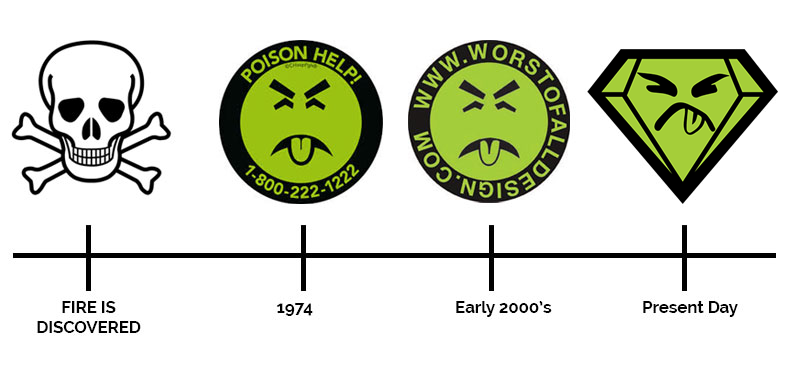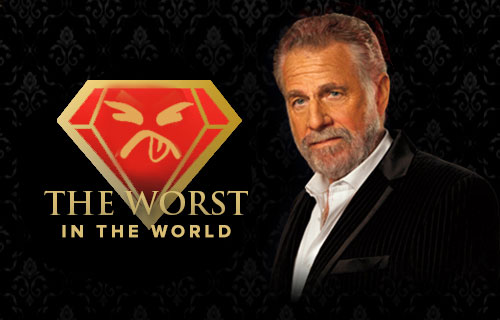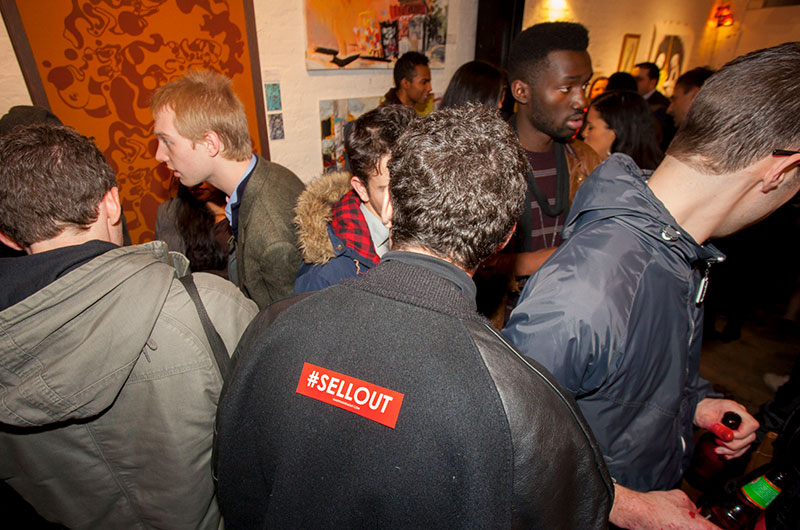Most people focus on creating a cool logo and miss what’s actually needed to turn it into a badass logo that people recognize and love. In the small business space, it has everything to do with how you communicate what you have to offer in a clear and meaningful way.
It has almost nothing to do with your logo!!
The problem is we small business owners are looking up at huge companies for ideas of what we need to succeed.
But we are not them, and they are not us. And we aren't even headed in the direction to be them! Because most of those example brands you are looking at are products.
But you are a service.
And even for the huge badass brands of companies that sell products- even their logos aren't the reason they are successful. It's the brand that made the logo what it is. For example:
NIKE: THE GODDESS OF VICTORY
Case in point: Nike. When we think of Nike, we think of the swoosh. So it’s no surprise that most people equate the power of a brand with the power of the logo.
I mean, what a brilliant logo, right?
WRONG!
Sure, there’s a story behind the shape of the logo, but people don’t buy Nike because of the swoosh.
The logo is brilliant only because of the behemoth brand that backs it up. Apparently a student designed the swoosh for $35 in 1971—what a steal! But it wasn’t really a steal. Nike made that logo brilliant by positioning the company in the market, and then pumping cash into smart advertising campaigns over decades.
The swoosh might as well be some weirdo abstract creature that has nothing to do with what it’s selling, like the mermaid on the Starbucks logo. It’s iconic because the brand made it iconic.
The logo is only one small part of the brand. Yes, a bad logo can hurt your business. And a brilliant logo that makes people stop and think, “Hey, that’s cool,” will have customers think about you for an extra millisecond.
But a logo does not a brand make. On the other hand, a great brand can make a plain logo seem absolutely brilliant.
Too harsh?
Why are we being so harsh on logos? After all, we love designing badass logos, and it’s fun to come up with a smart logo that encapsulates the brand’s essence into a single mark that, over time, the consumers will recognize sans the company name. That’s pretty cool, and that’s what all businesses want.
We’re being harsh because we don’t want you to spin your wheels on getting the perfect logo in lieu of building the brand that’s actually going to make that logo sing. Yes it's important that the logo is in line with your brand's positioning (a nice luxury font logo for a premium priced brand makes sense while a childish font would not) but once it's in the right vicinity, we find no "perfect" logo is going to make your company successful.
10:1 RULE
So what makes a good logo? The brand behind it. Go ahead: Put effort into a logo you can be proud of. But don’t do it if you’re not going to put ten times the effort into a brand that’s going to make it work for you. Stop spending time on your logo, and start spending time on your brand: your logo will thank you.
Most people think if they have a badass logo, they also have a badass brand! And while a cool logo can take you far, it is most certainly not a brand, and understanding the difference can open your eyes to new opportunities for growing your business.
Below are 4 key differences that can help you determine if you have a brand or not, and when you need one.
OK, BUT WHAT'S THE DIFFERENCE BETWEEN A LOGO AND A BRAND?
What’s a logo? A mark that represents your company.
What’s a brand? The reason your logo has any meaning at all. It’s the value, feeling, and personality of your company that your logo will come to represent if you market the brand consistently over time.
A logo without a brand is just another mark.
1. A LOGO IS A MARK, A BRAND IS YOUR STORY
A logo is the mark that identifies your company whenever it’s presented. It’s the mark that goes on top of your website, your business cards, and your products and packaging. A logo is one very important part of your brand.
A brand is how consumers perceive you. It's the sum of your company’s touch points and includes everything your customers come into contact with. It's the main message and idea that influences everything you say and do, how and where you market it, and of course, all the visual elements of your business (website, business cards, marketing materials...)
An important point most people miss is that a brand is not about what you are selling, but why people care about what you’re selling. It’s about the emotional need you are fulfilling.
Think about your brand as a story. Who are you, and why should people care?
2. A LOGO WILL HELP YOU START A BUSINESS, A BRAND WILL HELP YOU GROW A BUSINESS
You can start and build a business with a logo, and as a solopreneur just by operating you are your default brand because you are your business, and people can’t help being themselves pretty consistently. If you’re a reliable, hardworking person with a great product, you’ll probably do alright! Although if you rely on your personal awesomeness to develop your business, it will mean that you need to spend quite a bit of time with each lead for them to fully understand why you’re great.
When you start hiring employees and outside vendors who will also be selling your services (social media marketers, for example), a brand is crucial to making sure that everyone is selling the same thing, with the same message. Even if it continues to just be you, if you are utilizing online marketing techniques (social media, blogging, webinars, newsletters, etc…) a brand will make sure that all the content you put out there is consistently telling the right story, reinforcing the main overall message of your business. That consistency is what develops relationships with people overtime, be they current or potential clients. The longer you reinforce your message, the more awareness you bring to your business and that awareness multiplies overtime and translates into sales.
3. A LOGO INFLUENCES YOUR VISUALS, A BRAND AFFECTS AESTHETICS, AND MORE
Since the logo is the sum of the brand's visuals, we usually start by developing the perfect logo mark and then build the entire visual brand around it. But that visual brand does not directly reference company culture or messaging. Again, when you have a brand message, it influences every decision you make as a company (For example your pitch; your homepage copy; how and where you market. A few less obvious ones might be; how you structure your work days; where you have a company holiday party or host promotional events; what kinds of events you sponsor; what charities you support; the kinds of gifts you give...)
4. A LOGO IS MORE AFFORDABLE THAN A BRAND
Unless you have an investment with which you are starting your business, developing a brand before you’ve actually set up shop is usually not possible given your limited resources. When we help growing businesses create a brand, we have a lot of information on which to base that brand message; past experiences can shed light on the actual needs of the consumer (as opposed to the needs you think they have.)
That said, having a brand is powerful. If you have a clear and strong message, and brand elements that strengthen that message (i.e. a badass website, super professional business cards, eye catching mailers…) selling is much easier. Many industries sell their good based almost completely on their brand. Clothing and jewelry, for example, are a dime a dozen, are non-essentials, and consumers in these verticals buy based on the brand equity more so then in service-based businesses. The whole buying experience needs to make consumers feel great because they don't need to buy this item. And that experience is shaped by the brand.
But out of the gate, when you are starting a business, there are so many other things that need your time and money. So when boot strapping the business, it’s usually not feasible or the best use of your limited resources. After all, a great brand without a great business has nothing to sell. Here's an article about how much branding costs, and you're just starting out, check out our Brandshrink or Brandup, an affordable way to get everything you need, including a responsive website if you're not ready for the full shabang.
In the end you will need both, but when you are a small business, doing a full branding project is often not affordable. If you use a logo designer that knows about branding, elements of your overall brand message will still be discussed and explored to achieve the right logo anyway. A brand will always be more powerful, but companies don’t usually have the resources to develop one when first starting out. When you’re ready though, a brand is necessary and will help take you where you want to go!






























